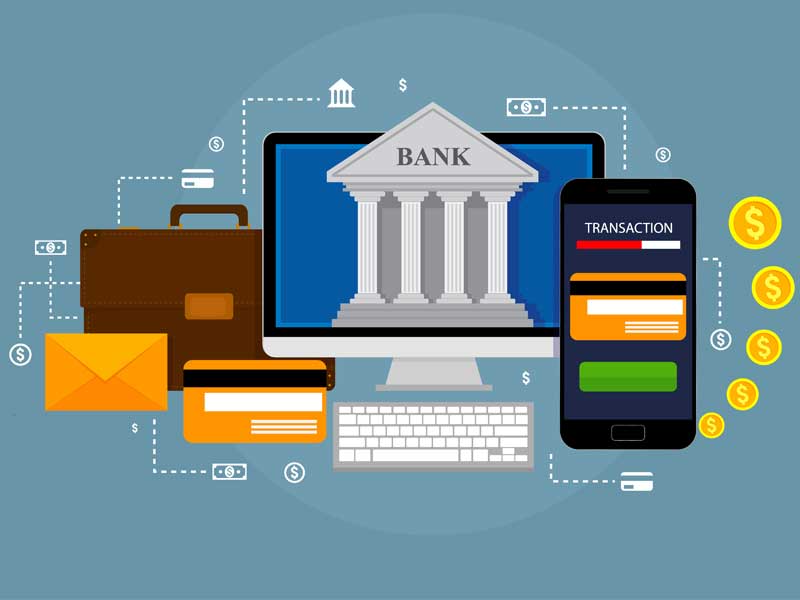
Banking As A Service is an interesting innovation that’s fast changing the financial landscape globally. It’s redefining how businesses and consumers exchange payments and access financial services, thereby creating new possibilities and opportunities. As a simple model which allows non-bank businesses to provide their customers financial services.
It integrates financial management and transportation into different aspects of people’s daily life.
How BaaS Works
There are different ways businesses can adopt BaaS into their daily business operations to improve their customers’ experience and organizational procedures.
- Integration: This is the primary method through which companies integrate financial services into its mobile or web platform, by using Application Programme Interface (APIs) — the technology that allows different systems to communicate and share data. This is the common way organizations adopt BaaS into their operations.
- Partnership: Regular businesses and non-bank companies like e-commerce brands, educational firms, legal institutions and other types of businesses can partner with financial institutions that provide these infrastructures. Hence, they could incorporate these financial services and provisions into their business procedures. Few organizations choose this method in adopting BaaS into their businesses as it is a more expensive option, also it creates a high level dependency on the Fintech provider, which might not be always favorable to the dependent company.
- Offering Services: Regular businesses can choose to offer banking services in alignment with their business, such as creating customer accounts, issuing credit cards, processing online payments, and providing loans directly to its customers. In some cases, they might need to obtain finance licenses from the government to enable them make these provisions. Very few organizations decide to go for this option as it requires a longer process of licensing and legal approval.
Examples of BaaS
An organization could adopt BaaS through all the three(3) strategies at the same time.
For example; an skills training institute wants to allow people make payments for their selected courses on their website. They could choose to integrate different payment options into their website or partner with banking organizations to provide financial services like e-wallet options, loans, etc.
Instead of becoming a bank itself, the educational institute can provide a platform that allows customers to apply, receive, and use these branded credit cards directly through the training platform, even though the actual banking services are handled by the partner bank.
Real-world Applications Of Baas
Travel &:hospitality: Businesses in the travel and hospitality industry attend to a wide range of customers everyday. Hence, they need an optimized system to ensure smooth onboarding of customers and proper customer management at every given time.
To enhance seamless and smarter booking processes, Hotels and travel agencies can integrate BaaS solutions to offer seamless booking and payment processes. They can create loyalty programs that reward customers with points that can be converted into financial benefits. This not only increases customer satisfaction but also builds brand loyalty.
Also, they could create a personal account option where customers can create travel destination wishlist, save into their wallet ahead of a trip. They could also enhance community engagement by creating online communities where travelers could interact and network, plan group trips and save in joint wallet accounts. The idea of incorporating financial services into travel and hospitality can birth new innovations that can expand organizational performance.
Educational Technology: Financial management is a huge part of school administration. There’s no academic institute that can successfully run without needing to outline financial budget, measure cost, receive payment, issue receipts, develop invoices and outline costs. Adopting financial technology in optimizing school management systems is very crucial and highly transformational.
They could assist in addressing current challenges and future-proof the school financial management. Through these systems and software, educational institutions can allocate resources judiciously, optimize budgetary allocations, and maintain financial transparency.
There are endless complexities in the rigorous process of managing tuition fees, recording out-of-date procurement agreements, grappling with limited purchasing power, and many others. The height of financial distress faced by educational institutions continues to grow.
Online Shopping platforms: Today, online shopping is a part of our daily lives. Whether it’s groceries, beauty products, food stuff, electronics or furniture, people are used to making purchases and exchanging money over the internet. The world of e-commerce sales is expanding exponentially and gives way for numerous opportunities for innovation, expansion and sophistication.
Hence, online trading businesses can integrate online payment processing and financing options directly into their checkout processes, so people can pay immediately after completing their transactions. Thereby, providing their customers with flexible payment methods and financing solutions. The BaaS operational model is perfect for e-commerce businesses. It enables brands to launch a multichannel direct-to-consumer sales offering quickly and easily, without having to build anything in-house.
Conclusion
BaaS can be adopted into every kind of business that receives payment, issues receipt, generates invoice or engages in any other financial processes.
It can either be adopted through integration of API technology, partnership with banking organizations, and service listing. Hence, organizations need to be very perceptive about the model of BaaS they adopt.
Leave a Reply